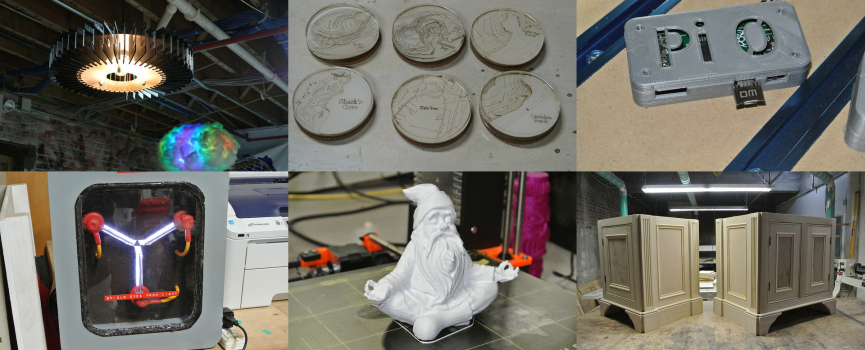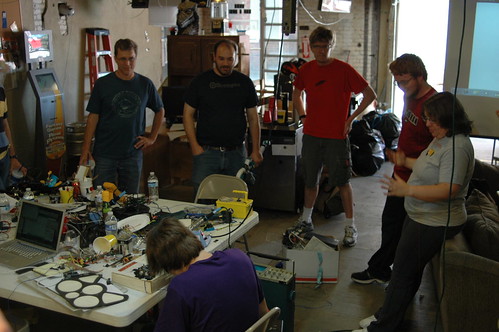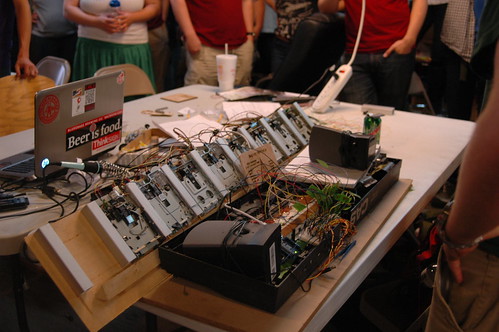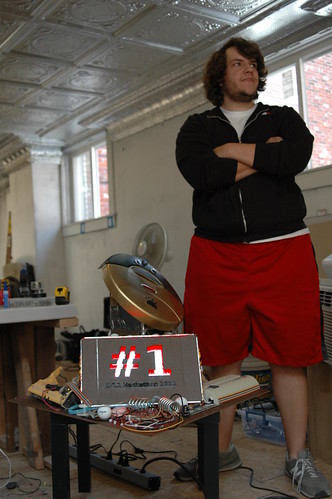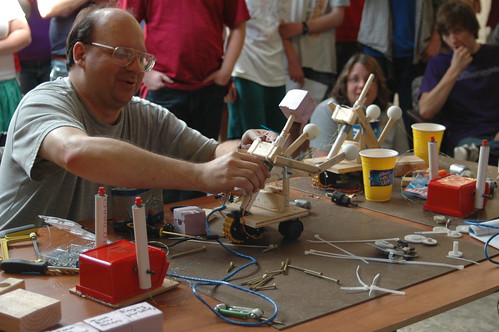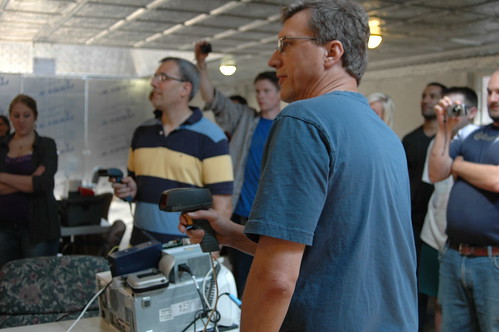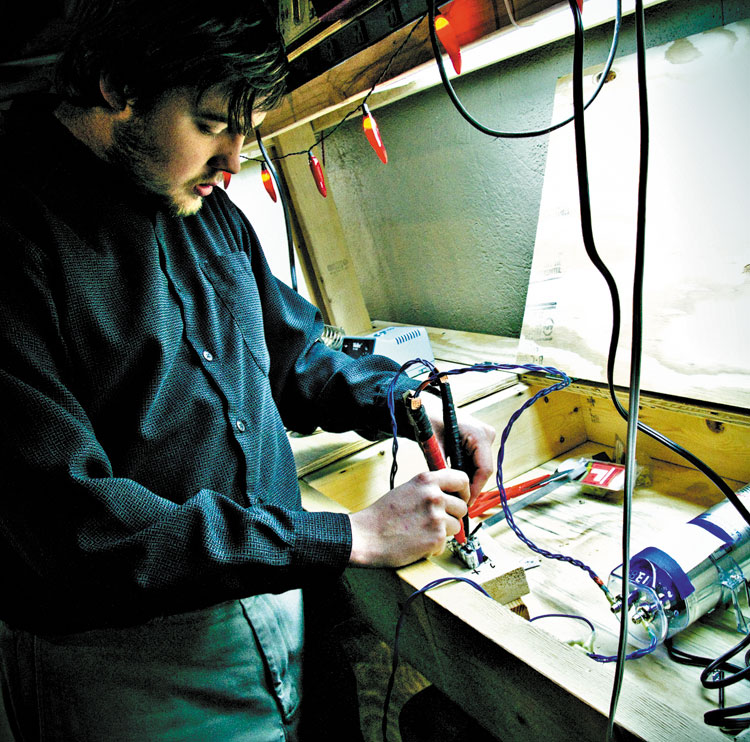A big personal thanks to everyone who came out to the 2012 LVL1 Boneyard Hackathon. Â We had 9 teams consisting of 54 hackers compete for 24 hours straight, putting to the test their technical capabilities, endurance, and creativity. Â We had 9 great projects, and everyone had a lot of fun! Â Our youngest competitors were only 11 years old! Everyone here already looks forward to the next event.
Thanks to Jon for recording a summary of the projects at the hackathon. Â I'll upload a full video of the project showcase soon!
[youtube=http://www.youtube.com/watch?v=1maAoSg6Fdo]
Team Bloominglabs made an incredible 3 musical instruments, a mixer for them all, and a bunch of LED blinky stuff! They brought 9 hackers to bring this all together, and were a flurry of activity throughout the hackathon.
The Raging Narwhals, a team from the Triangle Fraternity at LVL1, made a floppy drive keyboard. Unfortunately, it wasn't quite working by the end, but it was an impressive effort, and they plan to come back to finish it up. They brought a huge team, and almost all of them stayed through the night!
The LVL1 Stonecutters managed to make a 3-D Scanner and Animated Gif Maker using the parts in the boneyard!
Team Rainbow Unicorn built a first place trophy, so even if they failed, they would win.
The Dirty Cheaters put together an incredibly impressive Rock 'em, Sock 'em robots kit, which included rack and pinion steering, and no microcontrollers.
Destined for Failure built a looping synthesizer controlled by a PS2 mouse. Very impressive, especially consdiering this was the group's first foray into Arduino progrmaming!
Team Polar Bear build a laser pong game, complete with scorekeeping, 8 bit sound effects, and varying difficulty levels. Superb engineering, guys!
The Noobs were our youngest team, and they put together a custom computer using parts from the basement, including custom LED signs.
Finally, Bob the Bodybuilder built a very loud keypad controlled synthesizer. They even devised a means to convert sheet music to keypad tablature.
I owe a huge thanks to everyone involved. Thanks to FoodCalc Inc. (http://www.foodcalc.com) for supplying libation for the event. Thanks to Joe L. for helping out throughout the event. Thanks to Gary F. for being a trooper, staying way later than he meant to, and helping out almost every team here. Thanks to Jose C. for taking way more crap than he deserved. Thanks to Lauren, Jynn, and Steph for acting as team breakfast, and keeping us all from starving.
Plenty more photos on the flickr stream. Peruse through, and if this interest you, come to our space! Links above and to the right will help you find us.

